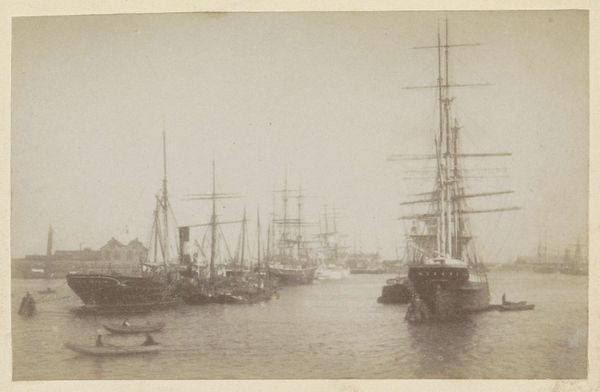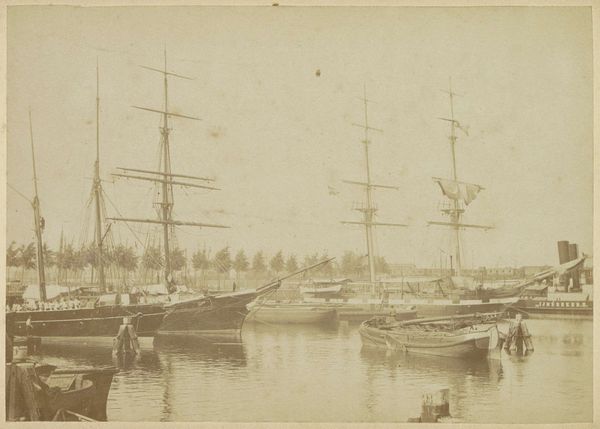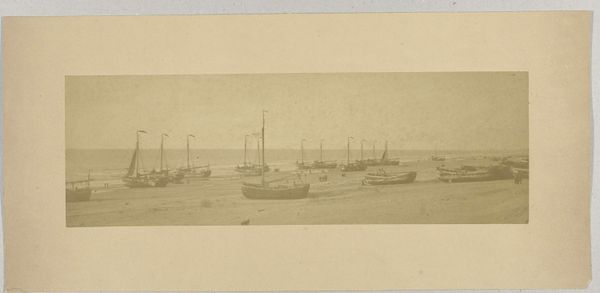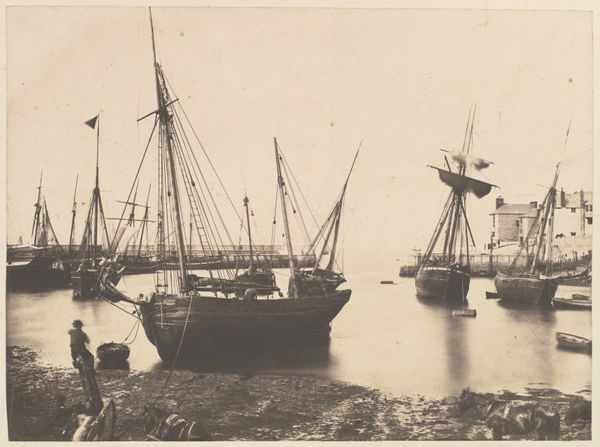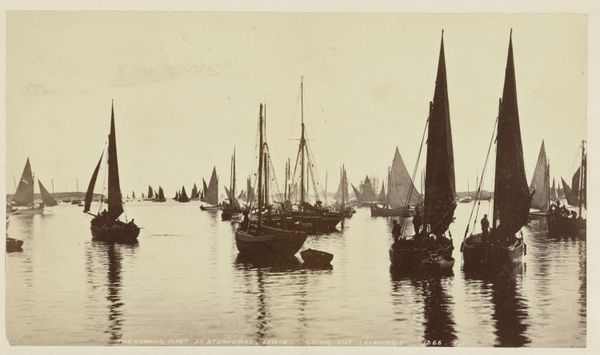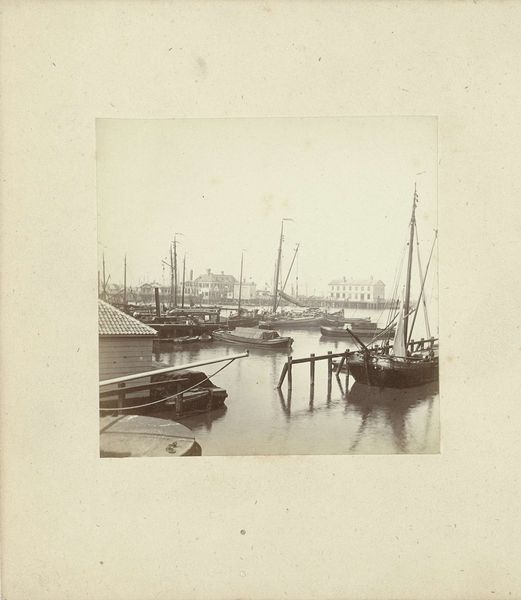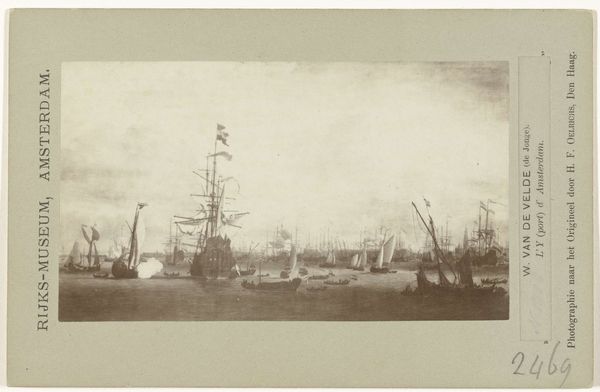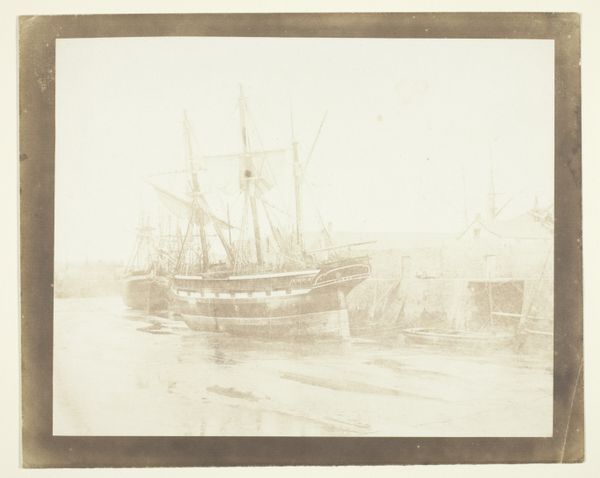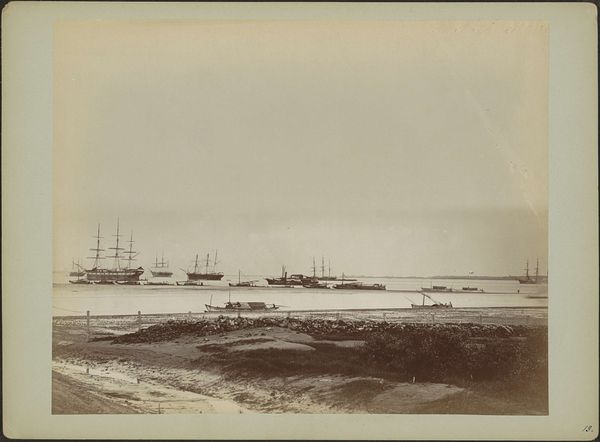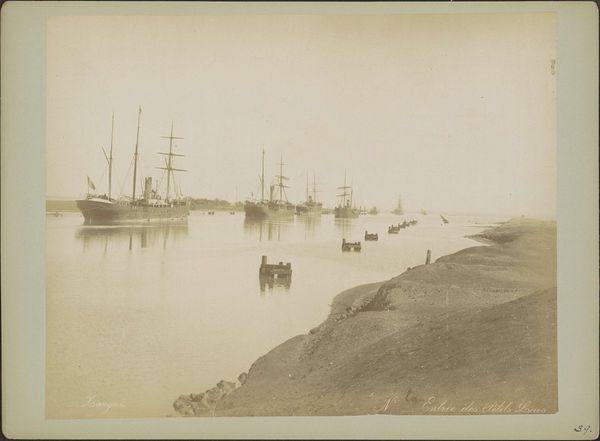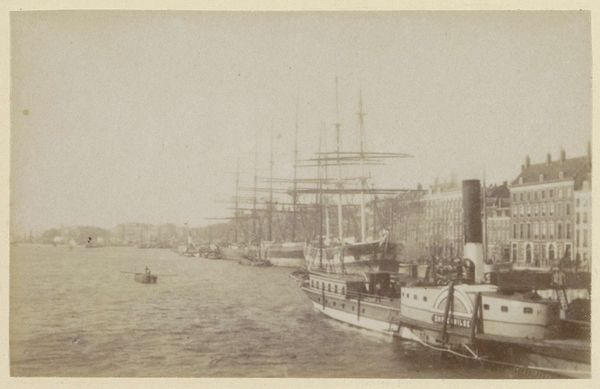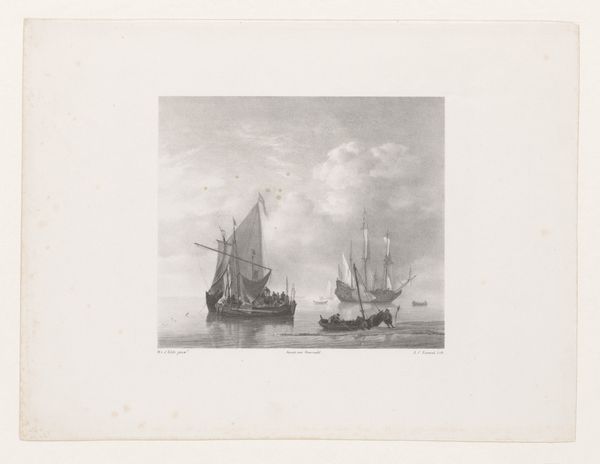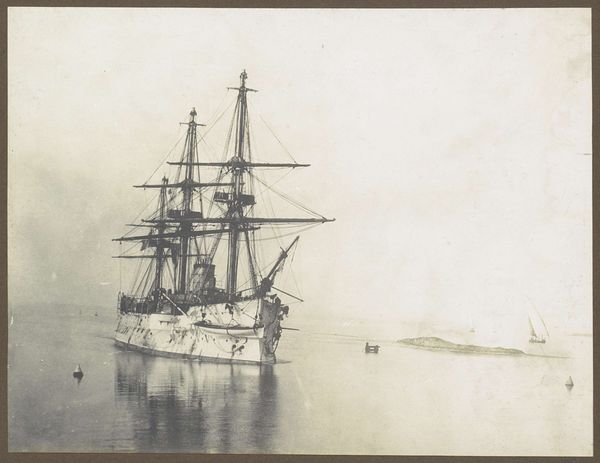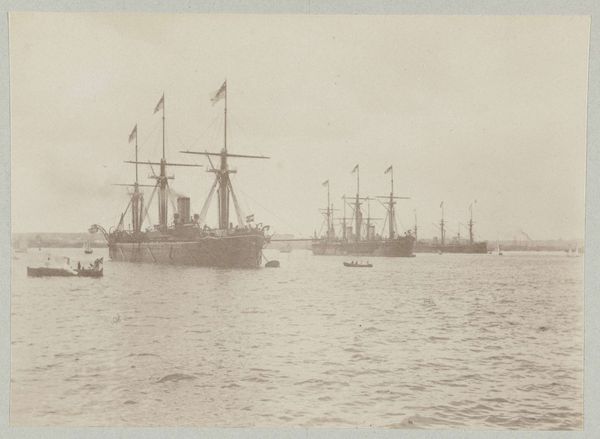
Fotoreproductie van schilderij Schepen voor de kust door Willem van de Velde II, coll. Rijksmuseum 1850 - 1880
0:00
0:00
Dimensions: height 100 mm, width 125 mm, height 108 mm, width 165 mm
Copyright: Rijks Museum: Open Domain
Curator: Looking at this gelatin silver print, "Fotoreproductie van schilderij Schepen voor de kust door Willem van de Velde II," taken between 1850 and 1880, one is immediately struck by the palpable moodiness of the marine landscape. Editor: Indeed. The photograph communicates a very romantic sensibility; a yearning for nature with all the drama and melancholia of the sea itself. It also gives the impression of timelessness that is amplified by its almost monochrome and blurred nature. Curator: Focusing on the compositional structure, consider the way the ships are rendered. The shapes almost emerge organically from the silver gelatin surface. Editor: Right! We perceive boats populated with small indistinct figures on the calm water that are dwarfed by enormous billowing sails. They could be symbols of exploration and the sea, or simply evoke nostalgia. Their representation within the pictorial space speaks volumes to that feeling of endless adventure associated with sailing. Curator: Precisely, but notice that through this photomechanical reproduction, Oelrichs provides visual interest with contrasting areas and varying tonality by playing with the highlights on the sails. It is less about narrative precision than optical stimulation. Editor: That interplay of light becomes key to unlock potential layers of meaning; historically, Dutch ships evoke trade, exploration, or perhaps, colonial expansion, ideas of great cultural significance represented here, but subtly and poetically, thanks to those techniques you described. Curator: It invites interpretation and visual engagement above any firm and historical document of naval activity. What do you take away overall from looking at this work? Editor: Ultimately it's the emotional charge I feel most. A quiet reflection on the immensity of maritime heritage and the intimate link of humanity with the water—a sense of both freedom and limitation. Curator: And that distillation to the emotive through tonal contrast, I think, demonstrates how potent form can be, even through photographic reproduction of paintings.
Comments
No comments
Be the first to comment and join the conversation on the ultimate creative platform.
